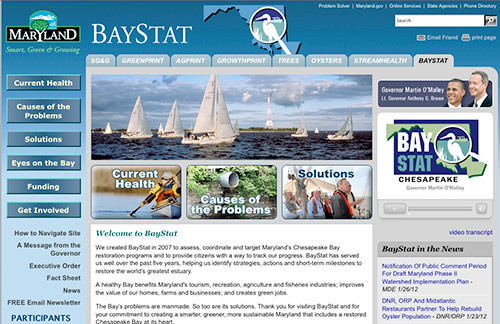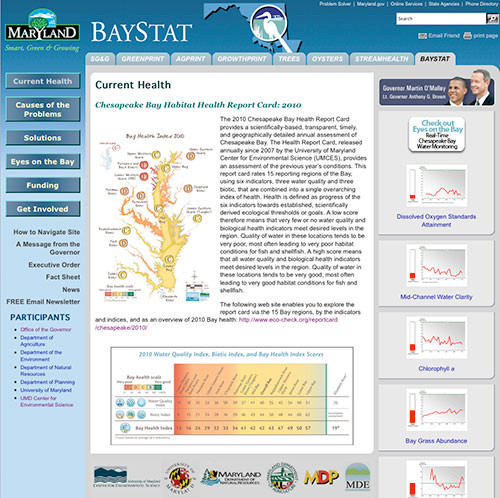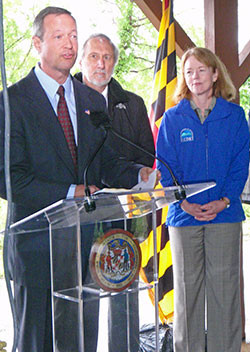Innovations in Environmental Synthesis, Reporting and Governance: Part 10 - Innovations in Governance/BaySTAT
Bill Dennison ·This is where Governor O’Malley came in and he created BayStat. This was based on tracking nutrient and sediment reductions. Our eutrophication problem is over-enrichment of nutrients creating dissolved oxygen “dead zones”.

O'Malley puts together an interesting assortment of people. We sit on a monthly basis with the Secretary of Natural Resources, the Secretary of Environment (these are obvious people), and also the Secretary of Planning, and the Secretary of Agriculture (our biggest input is diffuse, non point source agricultural inputs). The Governor also puts the Department of Corrections in there because he is using prisoners to plant trees, and build oyster cages. He puts the universities in there and tells us on the side “Keep them honest, don’t let them get away with anything.” He puts his budget, legal and key staff in there, so he can make decisions on the spot. And he uses the Socratic Method. This is kind of fun to watch. The Governor is asking questions. Talking to the Secretary of Agriculture, “What have you done about inspecting farm nutrient management? How many inspectors do you have? You have six. And how many farms? Five thousand. How do you prioritize them? You DON’T prioritize them?!? Do you think you SHOULD prioritize them?” At which point, the Secretary is starting to loosen his tie, wipe his brow. You’re only allowed two advisors, so he’s looking around for help. Not much there. Then the Governor looks to the Secretary of Planning and says “You have some GIS guys, you can help him, right? OK, in thirty days, you’ll come and report to me about how you’ve done that. Thank you very much.” So now the Secretary of Planning is starting to sweat because he has to do this in thirty days, and they have relentless follow through. Young smart politicians like Governor O'Malley are using evidence-based decision making because it protects them from the vagaries of what’s politically hot or not.
This is the key to the future. I think what TERN and our scientific enterprise can, and needs to do is supply data for this kind of governance model. If you look on the BayStat website, you see a current health button that goes straight to our report card; they have the causes of the problems, and they use some dials to look at how far we’ve come. Finally, the solutions are presented as progress against targets (how many cover crops we’ve planted this year?, how much manure have we hauled out in the process to watershed?) So this is exciting, at least to me, because I see a way forward instead of worrying about who’s in government, or who’s not. If it’s got evidence based decision making, we can have the science count.

This blog post was created from a presentation by Bill Dennison to the Terrestrial Ecosystem Research Network in Melbourne, Australia on 29 Mar, 2011 (full powerpoint presentation can be accessed on IAN Press.
About the author
Bill Dennison

Dr. Bill Dennison is a Professor of Marine Science and Vice President for Science Application at the University of Maryland Center for Environmental Science.


